Bystander video showed moment ‘life went out’ of George Floyd
A doctor revealed how a new video of George Floyd showed him dying as he tried to get air into his lungs. WARNING: Graphic
World
Don't miss out on the headlines from World. Followed categories will be added to My News.
A doctor has testified that George Floyd’s final moments of his life can be seen in a video taken by a bystander during the incident where he died after former Minneapolis policeman Derek Chauvin knelt on his neck for more than nine minutes.
On day nine of Chauvin’s trial, Dr Martin Tobin, a pulmonary expert, reviewed the video in court in front of jurors.
“At the beginning you can see he’s conscious. You can see slight flickering. And then it disappears,” Dr Tobin said.
“So one second he’s alive and one second he’s no longer,” Dr Tobin said.
“You can see his eyes, he’s conscious, and then you see that he isn’t. That’s the moment the life goes out of his body,” Dr Tobin stated.
Floyd, he said, struggled and tried to breathe as officers restrained him.
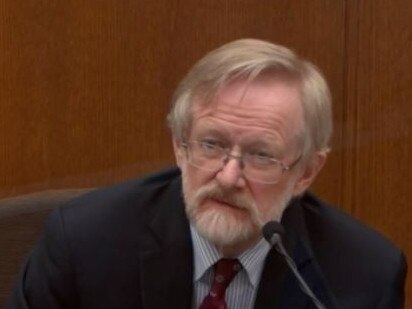
Dr Tobin testified that the lack of enough oxygen caused damage to Floyd’s brain and ultimately made his heart stop.
He told the court that Floyd died as a result of a “low level of oxygen” caused by shallow breathing that was the result of the three officers restraining him.
He also testified that the video showed Floyd “moving his hip to try and rock the right side of his body to try and get air”.
“You can see him again pushing down on the street to get air in. And there is movements of his hip,” Dr Tobin said.
“You may miss, but he’s having to use all his internal spine to just try and get air into that right side of the body.”
Prosecutors explained to Dr Tobin that the jurors may have heard one of the officers say, “if you could speak, you can breathe” during the trial. They asked Dr Tobin if that is a true statement.
“It is a true statement, but it gives you an enormous false sense of security,” he said.
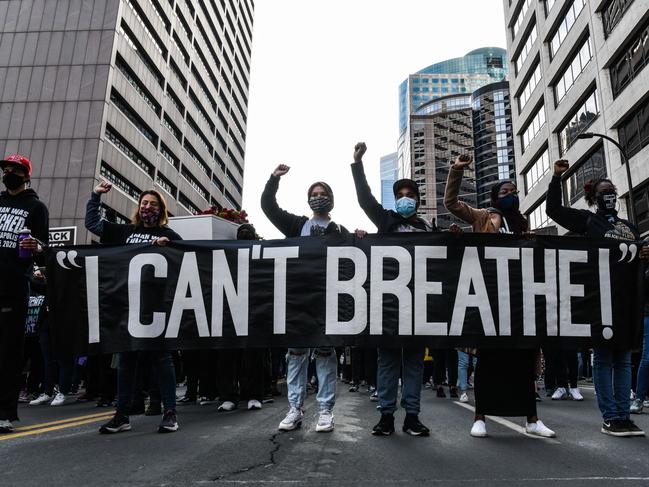
“Certainly, at the moment that you are speaking, you are breathing. But it doesn’t tell you that you’re going to be breathing five seconds later.”
Dr Tobin said that Floyd speaking during the incident was an important factor to his analysis of the medical records in the case.
“Because it tells us that for the time that he is speaking, and he continues to speak for 4 minutes and 51 seconds from the time the knee is placed on his neck, and tells us that there could not have been completes compression,” he said.
Asked by prosecutors if the brain is sensitive to oxygen deprivation, Dr Tobin said, “The brain is the most sensitive area to needing oxygen.”
AGENT REVISES ‘DRUGS’ STATEMENT
A senior Minnesota policeman has revised his statement that he could hear George Floyd say he “ate too many drugs” in a video of the incident, acknowledging in redirect that Floyd could have said something different.
James Reyerson, a senior special agent with the Minnesota Bureau of Criminal Apprehension, was shown video of the incident and asked by lawyers for the defence: “Did it appear that Mr. Floyd said, ‘I ate too many drugs?’”
“Yes, it did,” Agent Reyerson said during the trial of former police officer Derek Chauvin over the death of Floyd.
During redirect questioning, prosecutor Matthew Frank asked Agent Reyerson if he ever listened to the audio to try and figure out what Floyd was saying.
“I did not, no,” Agent Reyerson said.
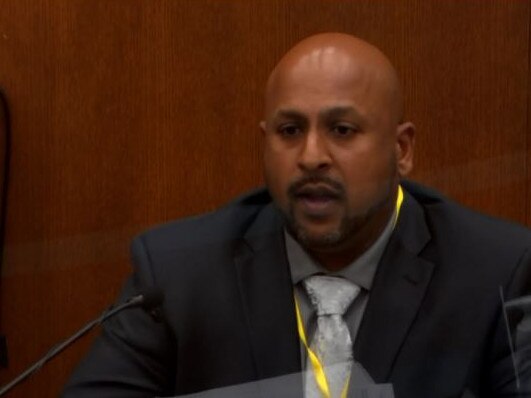
“That was an exercise Mr. Nelson asked you to do for the first time sitting there,” Mr Frank continued.
“Yes, sir,” he said.
Agent Reyerson was played him a longer video that included the same audio. Mr Frank asked him again if he was able to tell what Floyd was saying.
“Yes, I believe Mr. Floyd is saying, ‘I ain’t doing no drugs,’” Agent Reyerson said, contradicting his earlier answer.
Mr Frank followed up, “That’s a little different than what you are asked about when you’re only saw a portion of the video, correct?”
“Yes, sir,” Agent Reyerson said.
COP SHOULD NOT HAVE USED ANY FORCE ON FLOYD
Earlier, a police use-of-force expert has testified in the trial of Derek Chauvin that the former Minneapolis policeman used “deadly force” on George Floyd at a time when it was not appropriate to use any force.
Los Angeles Police Seargent Jody Stiger, a police witness for the prosecution, said that “no force should have been used” on Floyd when he was pinned to the ground by Chauvin last May.
When asked by prosecutors for his opinion on how much force was reasonable for Chauvin to use on Floyd after Floyd was handcuffed, placed in the prone position and not resisting.
“My opinion is that no force should have been used once he was in that position,” Sgt Stiger said.
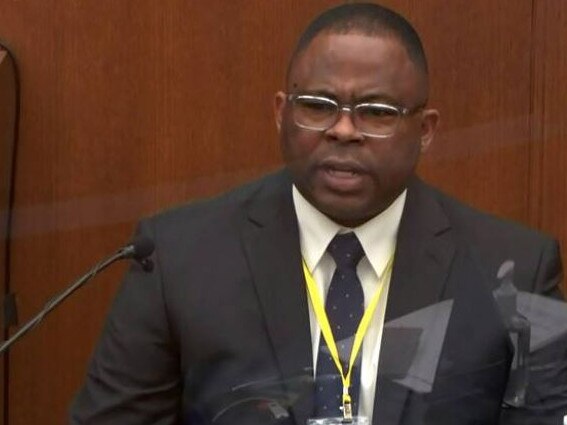
Sgt Stiger said Chauvin had put Floyd at risk of positional asphyxia, a key point of the prosecution’s defence, meaning Floyd died from a loss of oxygen.
Sgt Stiger said that even being handcuffed and in a prone position can make it difficult to breathe.
“When you add body weight to that, it just increases the possibility of death,” he said.
Sgt Stiger also said that Chauvin did not follow pain guidelines with Floyd when the officer was on top of him, saying Chauvin did not ease up on the pressure applied to the 46-year-old man.
“At that point, it’s just pain,” he told the court.
Sgt Stiger’s testimony came after Chauvin’s defence team said that Floyd’s please of “I can’t breathe” constituted resisting arrest.
The testimony from Sgt Stiger came on the eighth day of the trial of Chauvin, who has been charged with murdering Floyd.
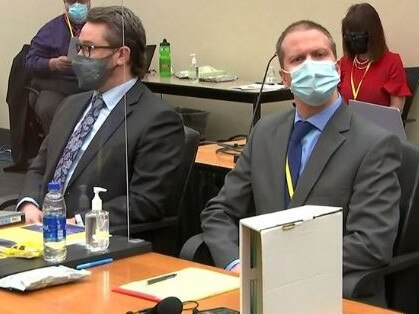
COP WAS TAUGHT TO ‘STAY AWAY FROM THE NECK’
On Tuesday, the use-of-force instructor who trained the man accused of murdering Floyd has claimed that police were taught to “stay away” from the neck in defensive tactics.
Lt. Johnny Mercil testified that Chauvin’s use of his knee on Floyd’s neck was not a proper neck restraint.
“However, I will add that we don’t — we tell officers to stay away from the neck when possible and if you’re going to use body weight to pin, to put it on their shoulder and be mindful of position,” Lt. Mercil told the court.
Lt. Mercil took the stand on day seven of Chauvin’s trial over the death of Floyd in May 2020.
The senior officer also told the court that using a neck restraint can render someone unconsciousness in “under 10 seconds”.
Lt. Mercil told defence lawyer Eric Nelson that he had trained hundreds of police officers on how to use a neck restraint, which he said is defined as “constricting the sides of a person’s neck”.
Lt. Mercil said “it depends” when asked how much pressure it takes to make someone unconscious.
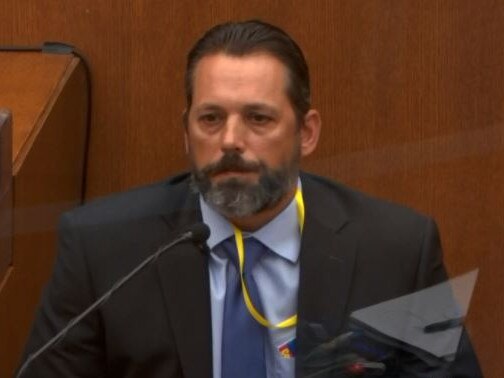
Factors include “the size of the person, your skill, whether they’re on narcotics or not, whether they’re having an adrenaline rush, heart rate, general physical health — there’s just a lot of factors involved,” he said.
Lt. Mercil said someone does not necessarily need to apply a lot of pressure over a long period of time to make someone unconscious.
Lt Mercil told the court it was department policy to move a prone suspect off of their stomach once they are in handcuffs, testifying that officers are trained to stand or sit suspects up, or put them in a “recovery position on their side,” once they are compliant.
Asked why officers do this, Lt. Mercil said, “There is the possibility and risk that some people have difficulty breathing when the handcuffs are behind their back and they’re on the stomach.”
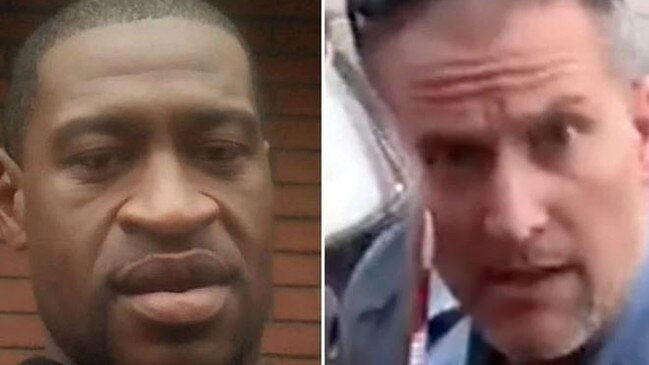
He said officers roll someone into the side recovery position after they’ve been handcuffed and are compliant for several reasons including “to prevent a potential situation where they might be subject to positional asphyxiation.”
Asked how soon should the person be put into the side recovery position, Lt. Mercil said, “I would say sooner the better.”
He also testified that the former policeman’s knee on Floyd’s neck would not be an authorised use-of-force, stating that a neck restraint is defined as “constricting the sides of a person’s neck”.
While showing the witness an image of Chauvin with his knee on Floyd’s neck while Floyd was handcuffed, prosecutor Steve Schleicher asked if “the subject was under control and handcuffed would this be authorised?”
“I would say no,” Lt. Mercil said.
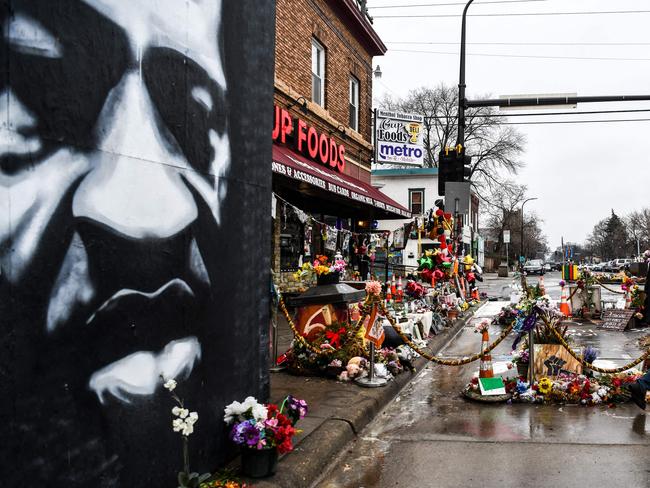
Lt. Mercil told the court he trained Chauvin on defensive tactics in 2018.
He was asked by prosecutors to explain to the jury what force is.
“It involves any weapons, substance, vehicle, equipment tool device or animal that inflicts pain or injury to another; physical strikes to the body, physical contact to the body that inflicts pain or injury, restraint or circumstance likely to produce injury,” Lt. Mercil said.
Lt. Mercil went on to confirm to prosecutors that “restraint is a form of force” and that both applying force or applying restraint needs to be proportional.
“In general, without using the slide for a moment, just explain to the jury as you would a group of trainings. What is proportional force?” prosecutors asked.
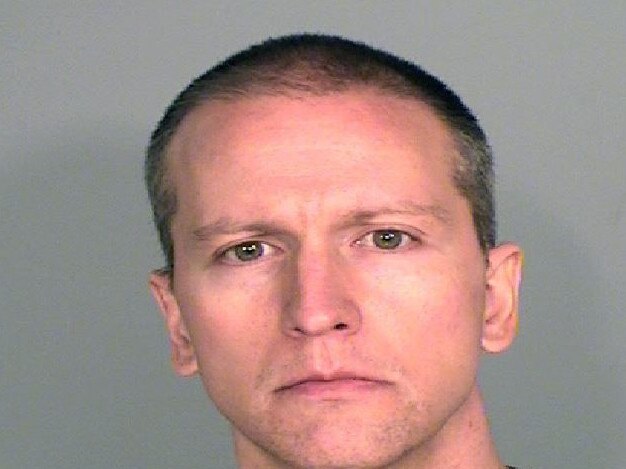
“You want to use the least amount of force necessary to meet your objectives, to control. And if those lower uses of force do not work, would not work or are too unsafe to try, then you increase the level of force against that person,” Lt. Mercil said.
“You said that you want to use least amount of force as necessary? Why is that?” the prosecution continued.
“Because if you can use the least amount of — lower level of force to meet your objectives, it’s safer and better for everybody involved,” Lt. Mercil added.
COP ‘ABSOLUTELY’ VIOLATED RULES
On Monday, the Minneapolis police chief who fired Chauvin after the death of Floyd, said the former officer “absolutely” violated the department’s neck restraint policy.
“The conscious neck restraint by policy mentions light to moderate pressure. When I look at exhibit 17 and when I look at the facial expression of Mr Floyd, that does not appear in any way, shape or form that that is light to moderate pressure,” Minneapolis Police Chief Medaria Arradondo said.
Asked by prosecutors when he believed the restraints should have stopped, Chief Arradondo said: “Once Mr Floyd had stopped resisting. And certainly once he was in distress and trying to verbalise that, that should have stopped.
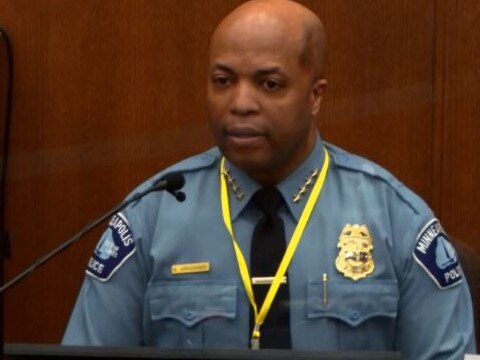
“There is an initial reasonableness in trying to just get him under control in the first few seconds. But once there was no longer any resistance, and clearly when Mr. Floyd was no longer responsive, and even motionless, to continue to apply that level of force to a person proned-out, handcuffed behind their back. That, in no way, shape or form is anything that is by policy. It is not a part of our training. And it is certainly not part of our ethics or our values.”
Chief Arradondo, who last June called Chauvin’s actions “murder” also testified that his officers are trained in the department’s de-escalation policy.
“The goal is to resolve the situation as safely as possible. So you want to always have de-escalation layered into those actions of using force,” Chief Arradondo said.
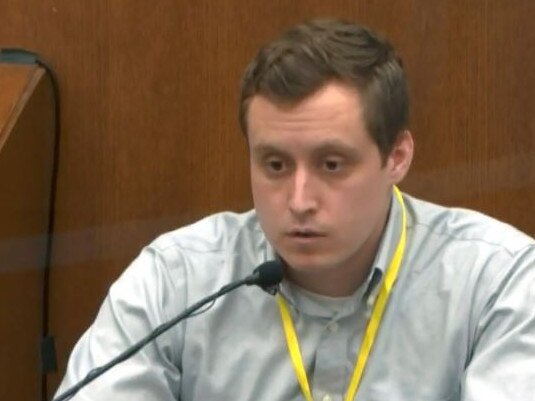
He said that an officer’s goal is “to resolve the situation as safely as possible.”
Chief Arradondo said police need to “treat the community with dignity”.
“The badge I wear and the member of MPD wears means a lot,” Chief Arradondo said.
“It is important for us to treat the community with dignity.”
Meanwhile, the Minneapolis doctor who declared Floyd dead testified there was not a heartbeat “sufficient to sustain life” upon his arrival to hospital, believing the stricken man’s cardiac arrest was brought on due to a lack of oxygen.
When asked by prosecutors if there was “another term for that”, Dr Bradford Langenfeld replied, “Asphyxia”.
Dr Langeneld, who was a senior medical resident at Minneapolis’ Hennepin County Medical Centre at the time of Floyd’s admission, said he went through several known causes of cardiac arrest during his examination of Floyd and concluded that “based on the information that I had, it was more likely” that hypoxia, or a lack of oxygen to the body’s tissues, was responsible for him being stricken over the other possibilities.
During day six of former Minneapolis police officer Derek Chauvin’s trial, Dr Langenfeld described Floyd’s condition and attempts to resuscitate him.
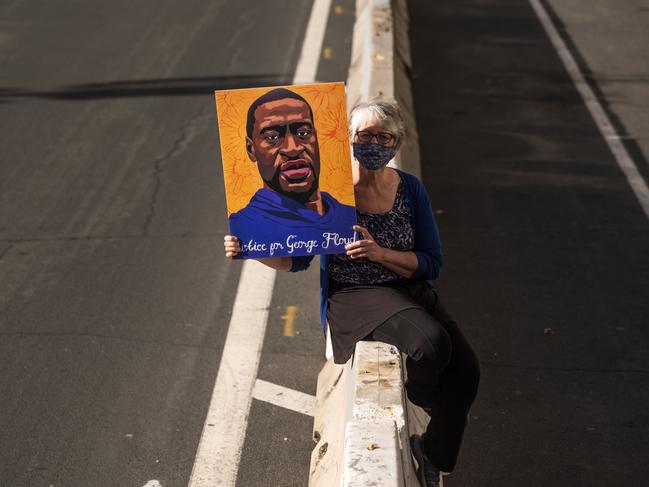
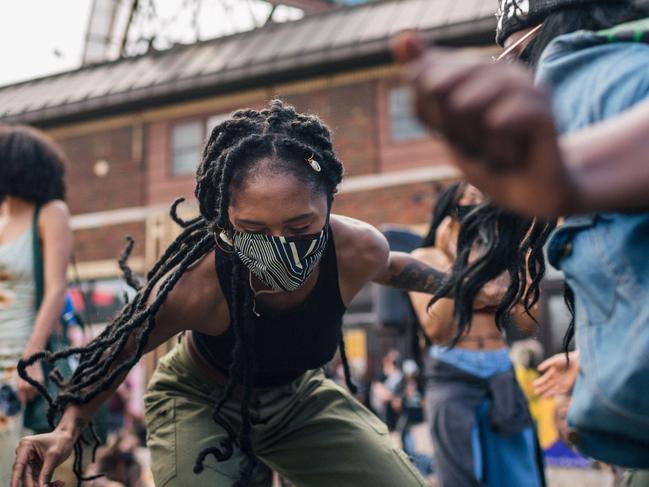
“When Mr. Floyd was brought in, would you describe it as an emergency situation?” prosecutor Jerry Blackwell asked.
“Yes, absolutely,” Langenfeld said, describing how Floyd was in cardiac arrest and that the goal was to re-establish “spontaneous circulation”.
Asked whether Floyd had a heartbeat upon arrival, the doctor said it was “not to a degree sufficient to sustain life.”
Dr Langenfeld also confirmed earlier evidence that no lifesaving measures performed by the officers or bystanders before Chauvin took his knee off Floyd’s body.
Floyd died in May 2020 after Chauvin placed his knee on the man’s neck as he pleaded, “I can’t breathe.”
His harrowing final moments, which were recorded on video, led to global protests against police brutality and racism.




